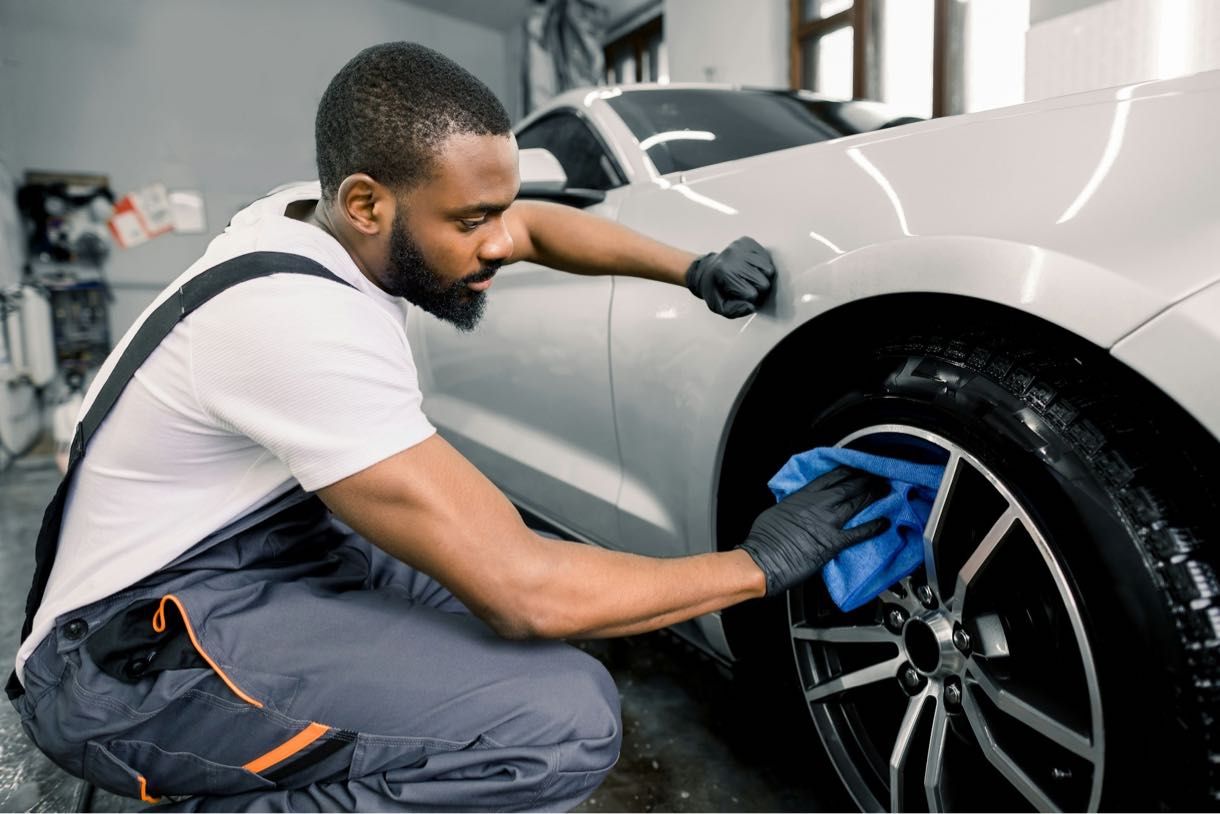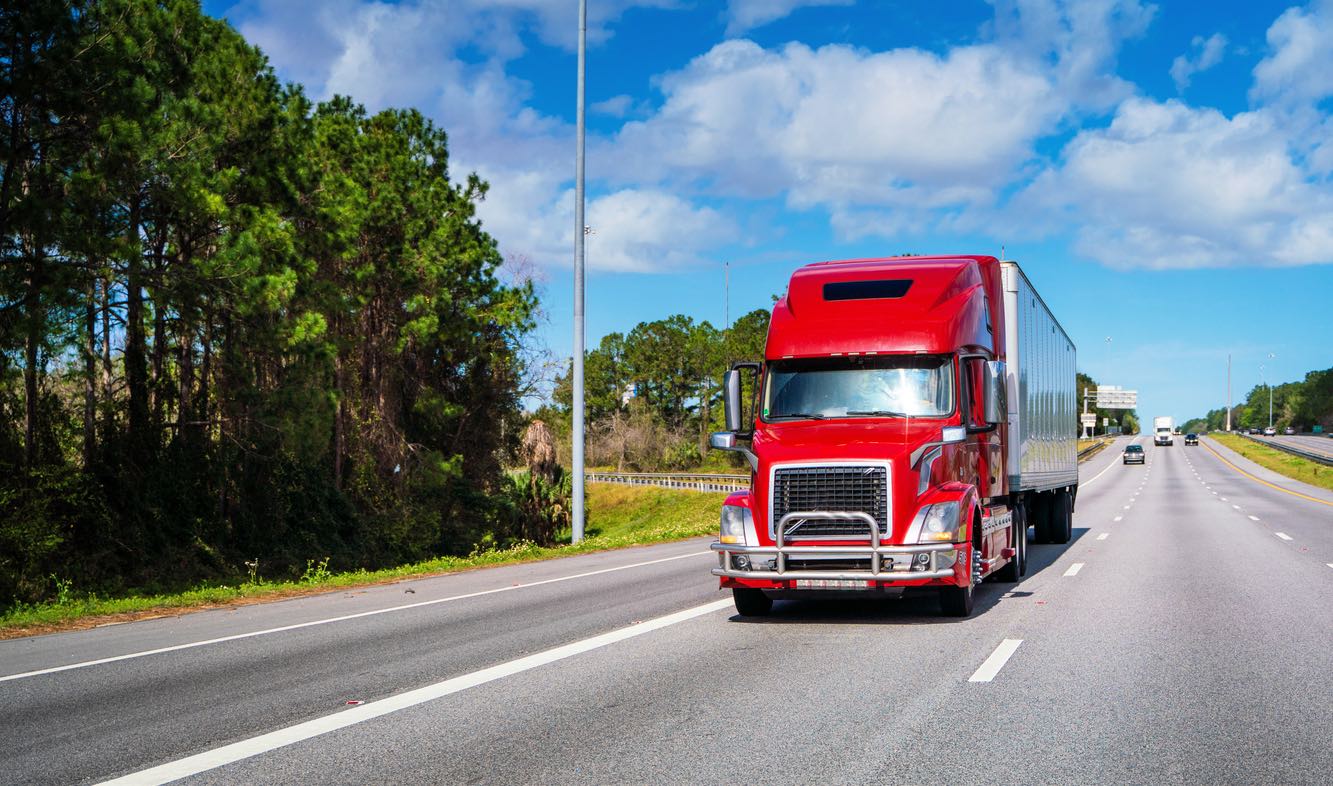While beginning the process of transporting an automobile over state lines might seem overwhelming, there are several ways to make it go more smoothly. The objective of this introduction is to simplify the idea of auto shipping by emphasizing its growing importance and demand in our world of increased mobility and connectivity. Reliable auto shipping services are more important than ever, whether you’re moving for work or personal reasons, buying a car from another state, or transferring a cherished car to a relative.
Fundamentally, car shipping is the process of moving automobiles between states while negotiating a complex web of regulations, safety precautions, and logistical challenges. The specifics of this procedure will be covered in detail in this part, along with why it is preferable to driving the car oneself. We’ll look at a few reasons why automobile shipping isn’t only a luxury for many people—from the car’s wear and tear to the time and work saved.
Why Choose Car Shipping?
In today’s hectic and technological world, vehicle shipping stands out as a reliable and convenient option. People choose this service for a variety of reasons, all of which emphasize how important it is. Maybe you have many cars or a pricey automobile that needs extra care and you’re moving for a job. Perhaps you’ve discovered your ideal vehicle on the internet, but it’s located in another state. Alternatively, it may be something as straightforward as wishing to give a car to a relative who lives elsewhere. Car shipping provides a worry-free option in any situation by removing the difficulties associated with long-distance travel and guaranteeing your vehicle reaches its destination quickly and securely.
As we go deeper into this extensive guide keep in mind that every stage involved in shipping a vehicle is a component of a bigger picture. Comprehending these components is essential for a smooth and fruitful automobile transportation journey. Stay tuned as we peel back the layers of interstate auto shipping, helping you understand pricing structures, prepare your automobile for travel, and select the best shipping company, among many other things.

Finding a trustworthy and competent auto shipping company is essential for a successful and stress-free auto moving experience. This section explores the important aspects to think about so that you can be sure your valuable vehicle is in good hands when making your decision.
Key Considerations for a Reliable Car Shipping Service
- Reputation and Experience: Start by doing a thorough evaluation of the company’s standing. Seek out a service provider with a strong history of dependability and happy clients. Examine their track record in the field; organizations with a lot of history typically have more efficient operations and a greater grasp of what clients want.
- Insurance Policies and Liability Coverage: Understand the insurance coverage offered by the car shipping company. Make sure they offer complete insurance that protects against any potential damage sustained while in transportation. Check the specifics of the carrier’s policy and inquire about any possible supplementary coverage alternatives offered by the car shipping broker for more assurance.
- Customer Reviews and Testimonials: Examine client endorsements and reviews across a range of channels, such as the business’s website, social media accounts, and independent review websites. Take note of remarks on their professionalism, promptness, careful handling of cars, and correspondence during the shipping process.
- License and Registration: Verify the company’s licensing and registration status with the Federal Motor Carrier Safety Administration and the Department of Transportation. A legal business should be able to be verified by their credentials and safety record using their authentic DOT and FMCSA numbers.
- Transparent Pricing and No Hidden Fees: Make sure the prices are transparent. Reputable businesses ought to offer a thorough estimate up front that includes all associated expenses and has no surprise charges. Companies who offer pricing that are far lower than the industry average should be avoided since this may indicate poor quality work or additional costs.
- Range of Services Offered: Think about the variety of services the business provides. While some may work from terminal to terminal, others may offer door-to-door delivery. Determine which services best fit your preferences and requirements.
- Customer Service Excellence: Assess the customer service provided by the business. A company’s commitment to its customers may be determined by how responsive and helpful its customer assistance is. An established company will be responsive to your inquiries and make themselves easily available.
Red Flags to Avoid in Car Shipping Companies
- Lack of Communication: One big warning sign is poor communication. You should seek elsewhere if the company is not responsive to questions or is not honest about their practices.
- Negative Reviews and Complaints: Your search is not finished even after you have decided on the vehicle shipping broker you wish to use. Now that your automobile is going to be shipped, you have to approve a carrier. Keep the following in mind when choosing the ideal carrier: Alarms should be raised by a large number of unfavorable reviews, particularly those that discuss car damage, delays, or payment problems.
- Unclear Insurance Policies: Companies that offer no insurance at all or that are evasive about what they cover should be avoided at all costs.
- Unusually Low Prices: While incredibly low costs might be alluring, they frequently signify that insurance coverage or service quality are being compromised.
- No Physical Address or Contact Information: A trustworthy business needs to have a physical location and easy-to-find contact details. Absence of these may indicate a bogus enterprise.
- Pressure to Pay Upfront: Businesses that require big deposits or put pressure on you to pay the full amount up front may not be reliable.
You may pick a car shipping company with confidence that provides peace of mind and ensures the safe and timely delivery of your vehicle by carefully weighing these factors and being aware of any potential red flags.

Making sure your automobile is ready for shipping is essential to a hassle-free and seamless transportation experience. This section explores the necessary arrangements you should have in place, encompassing everything from crucial paperwork to personal property removal and necessary technical inspections.
Documenting Your Vehicle’s Condition
It is important to record your car’s present state before it leaves on its transportation journey. This entails taking crisp, date-stamped pictures of your car from a variety of viewpoints, making sure to get all of the dings, dents, and scrapes that are already there. In the rare event that there is a disagreement over the state of your automobile when it is delivered, this paperwork will be quite helpful.
- Creating a Photographic Record To ensure that any damage is easily seen, start by washing your vehicle. Take broad images from either side of the car and close-ups of any damage that is already there. Remember to take pictures of the car’s exterior and inside, as well as its top and underbelly.
Removing Personal Belongings and Accessories
It’s crucial to take everything personal out of your automobile. The items in question may move while in transportation, which makes them potentially dangerous in addition to not being covered by the transporter’s insurance. This covers aftermarket accessories including GPS units, radio faceplates, and personalized speakers.
- Securing the Interior Make sure all pockets, including the glove box and center console, are empty and firmly closed after taking out personal belongings. Removing parking cards and toll tags is also a good idea in order to avoid incurring any extra fees when traveling.
Mechanical Preparations and Checks
Another important part of being ready is making sure that the car is in good mechanical condition. This include monitoring battery charge, tire pressure, and fluid levels. A quarter of the tank of gas is plenty for your automobile and will also save weight.
- Ensuring a Smooth Ride Give your carrier thorough instructions if the car has any unusual features, such as a complicated alarm system or a unique technique to start it. It is advisable to look for any leaks as well. Prior to transportation, any serious leaks should be rectified since they might harm other cars.
Final Checklist Before Shipping To ensure nothing is overlooked, here’s a checklist to follow:
- Documentation: Keep a copy of registration and insurance documents with you.
- Photographic Record: Date-stamped photos of your car from all angles.
- Remove Personal Items: Ensure the car is empty of personal belongings.
- Mechanical Check: Fluid levels, battery charge, and tire pressure.
- Special Instructions: Note down any specific handling instructions for your car.
- Leak Inspection: Check for and address any significant fluid leaks.
You may be confident that the vehicle is ready for its interstate trip if you properly follow these instructions. This careful planning helps to provide a more seamless shipping experience overall while also protecting your car. Remember that the secret to a good shipment is a well-prepared car.

Selecting the best shipping option for your car might be just as important as picking the broker and carrier. We will examine the various automobile shipping alternatives in depth in this part, along with how these decisions affect the final cost. From covered to open-air transportation, every choice has special advantages and costs associated with it, meeting a range of requirements and preferences.
Weighing Your Options Between Open-Air Auto Transport and Enclosed Auto Transport
Car shipping across states is most commonly done at a lower cost via open-air auto transport. Using this approach, cars are hauled around on an open trailer, usually with room for many at once. It has the benefit of being more frequently used and easily accessible, making it perfect for conventional models. It does, however, expose vehicles to weather conditions and road debris, so high-end or classic vehicles might not be the best fit.
Conversely, enclosed auto transportation offers an increased degree of security by isolating automobiles from outside influences. When it comes to brand new, expensive, luxurious, vintage, or delicate automobiles, this alternative is recommended. For owners of unique automobiles, covered transport is a good investment even if it is more expensive since it guarantees that your car will arrive in immaculate condition.
Cost Factors in Car Shipping
The cost of shipping a car is largely dependent on a number of factors in addition to the mode of transportation you choose. We’ll go into great detail about them to assist you in making the right decision.
- Distance and Route: The distance between pickup and delivery sites is the main element influencing the cost. Although the cost per mile may go down for longer trips, longer distances usually result in higher costs. The pricing may also vary depending on how easily pickup and delivery sites are accessible; isolated or difficult-to-reach regions may entail extra costs.
- Vehicle Size and Weight: Shipping charges are also influenced by your vehicle’s weight and dimensions. In comparison to small automobiles, larger vehicles—such as SUVs or trucks—take up more room and add weight to the carrier, which results in greater expenses.
- Shipping Speed and Timing: Your shipment’s urgency may have an effect on the price. For individuals who want the vehicle to be moved promptly, expedited shipping options are offered at an additional cost. Pricing can also be impacted by seasonal variations, with reduced rates in the off-season and higher prices during the busiest moving seasons, such as the summer.
- Additional Services: The price may increase for extra services like door-to-door delivery, top-load preference for open-air transportation, specific handling needs, or purchasing supplementary gap insurance. Although these services provide convenience and additional security, you should consider your requirements and budget before committing to them.
You may more easily explore the alternatives and expenses involved in shipping a car to a different state if you are aware of these aspects. This information not only helps you budget for the associated costs, but it also guarantees that you select the most appropriate shipping option based on your preferences and the needs of your car.

Knowing the legal and insurance ramifications of moving your car to another state is essential for your peace of mind as well as the safety of your car. This section aims to provide you with guidance on the various legal requirements and insurance alternatives so that you can make a knowledgeable choice and be ready for your car’s voyage.
Understanding Legal Requirements and Regulations
It takes more than just picking the best car shipping broker and then giving the transport carrier company your keys to ship a car over state borders. Numerous laws and rules regulate it, guaranteeing the safety of the transport service as well as yours. What you should know is as follows:
- Department of Transport (DOT) and Federal Motor Carrier Safety Administration (FMCSA) Regulations: Interstate auto shipment is governed by these government agencies. A genuine auto shipping business needs to be registered with the FMCSA and have a DOT number. This guarantees that they follow operational and safety guidelines.
- State-Specific Laws: There may be unique restrictions for transporting cars in each state. Knowing them is crucial, particularly if the vehicle is traveling across several states.
- Bill of Lading and Inspection Reports: In addition to serving as a receipt, the Bill of Lading is an important document that describes the state of your vehicle both before and after transportation. Make sure that everything said on this paper is understood and agreed upon by you.
Securing the Right Insurance Coverage
Because your car is an expensive possession, it is crucial to preserve it while being transported. In terms of insurance, you should concentrate on the following:
- Transporter’s Insurance (Auto Transport Carrier): Check to see if the auto transport carrier is covered by insurance – this is a legal requirement. Find out what is covered by their coverage and ask for confirmation. Understanding the scope of the coverage, including any exclusions or deductibles, is essential.
- Personal Auto Insurance: Find out whether your personal auto policy provides coverage during auto shipment by contacting your individual auto insurance provider. In addition to the transporter’s insurance, certain plans could provide further security.
- Gap Coverage: There may occasionally be a discrepancy between the real value or repair cost of your car and what the transporter’s insurance pays. To protect yourself from such situations, think about getting gap coverage.
Essential Tips to Ensuring Your Vehicle is Protected
- Document Your Vehicle’s Condition: Take thorough pictures or videos of the car before shipping it. This will function as documentation should you need to submit a claim for any losses.
- Understand the Claims Process: In the event of damage, familiarize yourself with the shipping company’s claims procedure. Processing of any claims may be accelerated by knowing who to call and what to do.
- Remove Personal Items: Generally, personal belongings left in a car are not insured. Take valuables out of the way to avoid damage or loss.
You may guarantee a hassle-free, seamless experience by mastering the legal and insurance facets of vehicle transportation. This information not only helps to safeguard the vehicle but also gives you the ability to make wise decisions that result in a smooth and successful car shipping process.

It’s not only convenient, but also essential to monitor your car when it travels between states in today’s digitally linked world. This important part of our in-depth guide covers the ins and outs of tracking your car while it’s in transit and provides instructions on how to receive it up when it arrives at its destination. You may make sure that the automobile shipping process goes well and without incident by being knowledgeable and organized.
Real-Time Tracking for Peace of Mind
Real-time tracking options are now available from current car shipping companies, enabling you to follow your car’s trip with a few clicks. The several tracking technologies—including GPS tracking—and the methods by which you might obtain this data will be discussed in this section. We’ll talk about the value of knowing your car’s current position and how convenient it is, particularly for long-distance shipments. We’ll include some advice on how to utilize these tracking tools efficiently and what to anticipate from updates.
Preparing for Your Vehicle’s Arrival
Being ready for your car’s arrival is essential as it gets closer to its final destination. This part will provide instructions on how to work with the shipping company to ensure a seamless handover. We’ll talk about the significance of scheduling flexibility, how to set up a convenient delivery location, and what to anticipate on delivery day.
Safeguard Your Vehicle with the Post-Delivery Inspection
It’s crucial that you give your car a full check when it’s delivered. You may find comprehensive instructions on how to examine your car after delivery in this subsection. We’ll walk you through a thorough checklist that covers mechanical condition, documentation verification, and exterior and interior examinations. Protecting your investment requires knowing what to look for, from small scratches to significant differences.
The Right Course of Action for Addressing Discrepancies
Knowing what steps to take in the unlikely event that you find any differences or damage is essential. We’ve shown how to record these problems with the bill of lading, take pictures of them, and get in touch with the shipping business right away. With this knowledge, you will be able to address any issues with promptness and efficiency.
Ensuring a Stress-Free Car Shipping Experience
A smooth and worry-free experience may be had by being aware of the tracking and delivery procedures for your car.

To sum up
Now that we have completed our thorough exploration of the specifics of interstate auto shipping, it is important to review and emphasize the most important lessons we learned. This article was written with the intention of empowering you, the reader, to make wise judgments while deciding how to move a car over state lines.
A good car shipping experience is mostly dependent on choosing the appropriate shipping provider. Recognize that selecting a service provider is only one aspect of the process; the other is forming a partnership with a business that shares your goals, requirements, and financial constraints. In addition to providing a little peace of mind, a trustworthy business can ensure the prompt and secure delivery of your car.
Making sure your car is ready for the trip is just as vital. This covers not just your car’s physical preparedness but also obtaining the required paperwork and adhering to rules. A well-prepared vehicle reduces the possibility of damage and delays, guaranteeing a seamless transportation experience.
Another crucial component of automobile transportation is knowing the pricing and laws. Effective budgeting requires knowledge of the many variables that affect the price, such as the mode of transportation and the distance. Additionally, being aware of the legal requirements and available insurance coverage alternatives helps shield you from unanticipated events and assures you against any hazards.
We’ve worked hard to give you a clear, understandable road map for navigating the complexity of auto shipping throughout this tutorial. Our aim has been to simplify the procedure so that it is clear and easy to grasp. The advice and information provided here will help you move with confidence, whether you’re buying a new automobile, shipping a car to a loved one, or moving yourself.
In summary, keep in mind that three key elements are necessary for a successful interstate auto shipping experience: choosing the best shipping company, properly preparing your automobile, and having a comprehensive grasp of the associated expenses and legal ramifications. Now that you know this, you’re more prepared to start your auto shipping trip and make sure it goes well and meets your needs.
It’s important to keep in mind that Ship A Car, Inc. provides comprehensive services across the United States, including to and from Hawaii and Alaska, for anyone looking for a dependable and trustworthy partner for their vehicle shipping needs. Please fill out the online vehicle shipment quote form or call (866) 821-4555 for your free, no-obligation quote. Allow us to guide you confidently and with ease down the road ahead.
Q: How long does it typically take to ship a car to another state?
A: There are a number of factors that can affect the amount of time it takes to transport a car, including the distance.
Q: What is the average cost to ship a car across states?
A: Distance, the kind of vehicle, and the mode of transportation all have a role in determining the costs.
Q: How can I ensure my car is safe during transit?
A: It is essential for one’s safety to select a company that has a solid reputation and enough insurance coverage.




